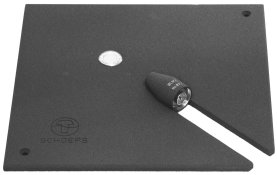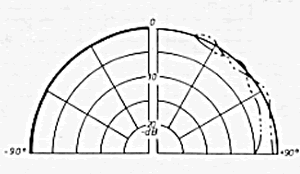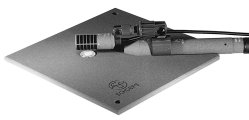BLM 3g BOUNDARY-LAYER MICROPHONE CAPSULE

BLM 3g
FEATURES:
- Microphone capsule designed for placement at an acoustic boundary
- Particularly frequency-independent, hemispherical directional pattern
- Very low off-axis sound coloration
- Very good reproduction of low frequencies
Boundary-layer recording is by now a well-known technique, offering unobtrusive microphone placement possibilities (no stands required) and a directional characteristic that is independent of frequency.
It is based on an effect in physics by which sound pressure is doubled along a sound-reflecting surface.
If a transducer is placed upon (or within) a large, sound-reflecting surface, its output voltage will be twice that of an equivalent transducer in a free sound field. In theory, an ideal transducer of this type would have a membrane of infinitesimally small size, and would be mounted flush with an infinitely large, perfectly sound-reflecting surface.
In fact, the plate in which the small transducer of the BLM 3g is mounted assures reflection of only the high and medium frequencies. For reflection of sound at lower frequencies (greater wavelengths), the dimensions of the surface must be correspondingly larger (Imax greater than the wavelength). So the microphone is placed on a floor, wall or ceiling, or it is mounted on another surface large enough to reflect the lowest frequencies of interest.
Since the plate of the BLM 3g is only 5 mm thick, and the transducer is not mounted at its center, the edges of the plate have very little effect upon the sound pickup. Since the BLM 3g does not interfere with the natural soundfield, sounds originating off-axis encounter very little frequency discrimination. Thus sound coloration is low, even for moving sound sources, due to the BLM 3g's particularly frequency-independent hemispherical directional pattern.
Comb-filter effects produced by microphones used near sound-reflecting surfaces do not occur with the BLM 3g, since at the boundary in which the transducer is mounted there can be no phase difference between the direct sound and its reflection.
Contrary to pressure transducers with their omni-directional characteristic, the sensitivity of a boundary-mounted microphone in the diffuse soundfield differs from that in the direct soundfield: for the direct soundfield it increases by 6 dB, due to the pressure doubling, while it increases by only 3 dB in the diffuse soundfield when compared with the free soundfield. The explanation is the lack of a phase correlation among the reflections. Thus a boundary-layer microphone picks up less "room" and the recording becomes slightly "drier."
The capsule itself is a classic electrostatic pressure transducer, which assures accurate reproduction of even the lowest frequencies, along with the high signal-to-noise ratio and stable performance typical of professional condenser microphones. The doubling of sound pressure at the boundary layer results in an even higher signal-to-noise ratio.
As this type of transducer is not only inherently insensitive to wind and vibration, but also is comparatively heavy, the BLM 3g picks up very little solid-borne noise. For example, when footsteps are recorded, most of the sound reaching the microphone will be air-borne.
A further advantage of this type of microphone is that no stands or suspension devices are required, which would be intrusive in certain situations. Typical applications include pickup of stage dialogue, or in orchestra pits.
Since the microphone may well be used on the floor, the likelihood of damage from its being stepped on has been reduced by careful design and construction. As a rule, the capsule will not be harmed by normal footwear.
Boundary-layer microphones, when separated by more than half a meter, are especially well-suited to making unobtrusive A-B stereo recordings.
Also, a Mid-Side (M-S) stereo arrangement can be made with a special accessory (MS-BLM), described further on.
The BLM 3g (Boundary-Layer Microphone Capsule) resembles any other microphone capsule (MK-) of the Colette Series in that it needs a microphone amplifier (CMC) to become a complete microphone.
This arrangement allows the attenuator (DZC), and active accessories such as the variable bass filter (CUT) or the active cable (KC) to be added as well.
Surface finish: matte gray, non-reflective Nextel
For the frequency response see BLM 03 Cg.
Dimensions:
Plate:
200 mm x 200 mm x 5 mm
Height
of the microphone amplifier connector: 21 mm
Weight:
570 g (without microphone amplifier CMC)

BLM 3g on-axis frequency response

BLM 3g Polar Diagram

Accessories (to be ordered separately)
Special clamp MS-BLM allowing Mid-Side (M-S) stereo pickup with the BLM 3g in the "Mid" channel
|
|
|
|
|
MS-BLM |
||
This is a double clamp which is attached to the CMC (or active cable end KC) on one side while it holds a CCM 8 or an MK 8 capsule (necessary for M-S recordings) and its KC active cable just above the diaphragm of the BLM 3g. The acoustic axis of the MK 8, indicated by the engraved "8", must be set parallel to the plate with the red dot to the left, as viewed from behind the microphones.
This arrangement allows for post-production dematrixing, a special feature of the M-S technique.
Color: gray


